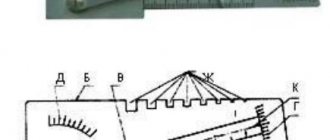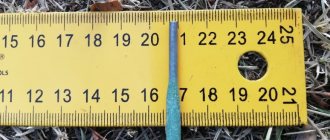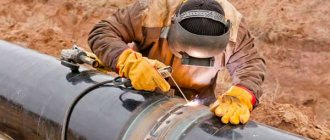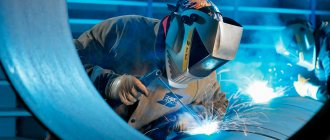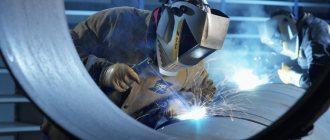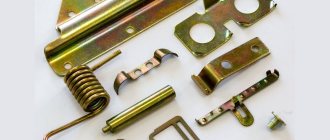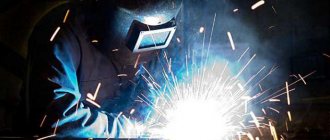| Documents for enrollment | Application, photo 3x4 | ||
| Document at the end of the course | Certificate Gas welder qualification certificate | ||
| Program of additional professional education and advanced training | 162 | 5500 | |
| Electric welder with fire-technical certificate | 162 | 4000 | |
| Gas welder with fire-technical certificate | 162 | 4000 |
8 (499) 178-80-11
General requirements
When performing manual arc welding work, a worker may encounter the following hazards:
- Electric shock.
- Burns from metal drops.
- Arc eye damage.
- Skin damage from electric arc.
- Cuts and bruises in the process of preparing metal for welding.
- Poisoning with dangerous gases.
- Fire due to metal melting.
- Explosions when explosive objects are located nearby.
Work within the framework of safety precautions begins with cleaning the workplace, then checking the functionality of the equipment, grounding, etc.
Thus, the electric welder is exposed to various dangers during his work. Knowledge of the basics of safety, labor protection and fire safety will allow him to avoid problems. In this case, it is necessary to take into account the specifics of the process: when arc welding, there are other risk factors that differ from gas welding. The difference is due to the use of electricity to power the arc, or more precisely, its ultraviolet and thermal radiation and the gases produced.
OCCUPATIONAL SAFETY INSTRUCTIONS for electric welders.
Copy URL
1. GENERAL SAFETY REQUIREMENTS
1.1. During electric arc welding, accidents can occur due to non-compliance with the established rules for the design and operation of equipment, violations of technology and safety instructions.
1.2. The danger of electric shock arises from direct contact with live electrical parts. installations that are energized due to insulation damage.
1.3. The welding arc is a powerful light source that has a negative effect on the welder's vision. Ultraviolet rays emitted during arc welding, even with a relatively short exposure (within a few minutes), cause eye disease. Longer exposure to these rays can cause vision loss.
1.4. The coating of metal electrodes contains large amounts of manganese and feldspar. Therefore, in the absence or malfunction of the ventilation unit, there is a risk of poisoning of the electric welder and nearby workers when the specified components of the coating burn.
1.5. Each electric welder must know well and strictly comply with the requirements set out in these instructions, and the enterprise administration must create normal working conditions and provide welders’ workplaces with everything necessary for safe work.
1.6. Persons at least 18 years of age who have passed a medical examination are allowed to perform electric welding. Workers must be trained in safe work methods and techniques and the certification commission must annually check this knowledge, and electric welders must have an annual fire certificate. The electrical safety clearance group for electric welders to work on welding units must be at least second.
1.7. When moving from one workplace to another due to a change in working conditions, the electric welder must receive safety instructions from the mechanic directly at the workplace.
1.8. The welders' workplace must be located at a distance of at least 10 m from the generator, flammable materials and open fire.
1.9. The production area of one welding station is determined by the dimensions of the products being welded. In this case, the minimum area must be at least 4 m2. The passage between posts is at least 1 m.
1.10. At the installation sites of generators and on the walls of the premises, warning posters “Flammable”, “Do not smoke!”, “Do not approach with fire”, etc. are hung in a visible place.
1.11. It is necessary to check the availability and serviceability of fire fighting equipment.
1.12. An electric welder must know how to free a victim from electrical voltage and be able to provide first aid in case of electric shock.
1.13. Persons guilty of violating this instruction will be subject to disciplinary action in accordance with internal labor regulations.
2. SAFETY REQUIREMENTS BEFORE STARTING WORK.
2.1. Check the serviceability of personal protective equipment and safety devices (visors, dark glasses, glasses, etc.). It is prohibited to wear oily and torn work clothes and shoes.
2.2. Clean up the work area, remove unnecessary objects that interfere with work, as well as flammable materials. Do not install welding machines in cluttered areas.
2.3. By checking, the electric welder must ensure that the electric welding equipment, measuring instruments, insulation of current-carrying wires, and tight connections of all contacts are in full working order. Grounding of the welding installation (machine body, table, etc.) must be done using flexible copper wires before starting work and not removed until it is completed.
2.4. Remember that the welder’s workplace must have good illumination of at least 150 lux, which you need to pay attention to before starting work.
2.6. Know that when carrying out welding work it is necessary to provide the workplace with fire extinguishing means.
3. SAFETY REQUIREMENTS DURING OPERATION.
3.1. For electric welding:
3.1.1. Make sure that your hands, shoes and clothes are always dry, since the work of an electric welder involves the use of electric current.
3.1.2. The voltage at the terminals of the generator or transformer used to power electric welding stations at the moment of ignition of the arc should not exceed 110 V for DC machines and 70 V for AC machines.
3.1.3. The wires supplying current to the distribution board and from it to the welding points must be reliably insulated by enclosing them in rubber hoses. These wires must be protected from high temperatures and mechanical damage. It is prohibited to use wires with damaged insulation, exposed connections, etc.
3.1.4. To protect your face and head, you should use a special shield or helmet-mask. If a shield or helmet has gaps or cracks in the glass, it is prohibited to work in them.
3.1.5. Clean the seams from slag with a wire brush and wear safety glasses.
3.1.6. Cutting or welding metal in the shed is not permitted.
3.1.7. To avoid splashing of molten metal, first clean the welding area.
3.1.8. Do not leave the electric holder under current unless necessary.
3.1.9. The electric welder's workplace must be fenced with a screen painted in a matte color in order to protect the eyes of workers working nearby on other jobs. The stationary work place of the electric welder must be equipped with exhaust ventilation.
3.1.10. If welding work is necessary near electrical installations, cables and other live parts of electrical installations, the latter must be protected from possible contact.
3.1.11. An electric welder is prohibited from:
— weld vessels and pipelines under pressure,
- work in damp areas, in rain and sleet,
- work at heights without scaffolding and using a safety belt, as well as from ladders and stepladders,
— lay the welding cable together with gas welding hoses and pipelines under pressure or high temperature, as well as near oxygen cylinders,
- work under a suspended load,
- disconnect the welding wire from the rheostat with a jerk,
- work near unfenced or uncovered hatches, openings, wells, etc.
- without the foreman’s permission, remove fences and covers of hatches, openings, wells, etc., even if they interfere with work; if fences or covers were removed during work, put them back in place after finishing the work.
3.1.12. It is prohibited to simultaneously carry out welding work and work with pneumatic tools on the same structure or on the same object.
3.1.13. When carrying out welding work in damp weather (under a canopy or in damp rooms), in addition to rubber dielectric galoshes, it is necessary to use wooden flooring and a rubber mat.
3.1.14. Closed metal containers must be illuminated by lamps located outside or by hand-held portable lamps with a voltage of no more than 12 V. The transformer for connecting portable lamps is installed outside the object being welded, its secondary winding must be grounded.
3.1.15. Simultaneous work inside closed structures by electric welders and gas welders is prohibited.
4. SAFETY REQUIREMENTS IN EMERGENCY SITUATIONS.
4.1. In the event of a fire or other accident, the welder must stop working, turn off the equipment and report the incident to the person in charge. If possible, use available fire extinguishing equipment or call the fire brigade.
4.2. In case of illness or accident, stop work and notify
mechanic or master and go to the first aid station. The foreman or his replacement is obliged to inform the enterprise administration about this in order to draw up a report on the accident that occurred and take measures to prevent the recurrence of such incidents.
5. SAFETY REQUIREMENTS AFTER COMPLETION OF WORK.
5.1. The electric welder is obliged:
5.1.1. Disconnect the welding unit from the electrical network.
5.1.2. Inspect your work area, remove material and parts to a designated area and stack them securely.
5.1.3. Collect wires and protective devices and place them in the designated place.
5.1.4. Make sure that after work there are no smoldering objects left - rags, insulating material, etc.
5.1.5. Inform the foreman about any malfunctions at the workplace.
5.1.6. Remove work clothes, tools and tidy up the workplace.
Chief Engineer _______________/ /
AGREED:
Labor safety engineer _______________/ /
If you find an error or inaccuracy, please report it by quick mail.
Clothing and special protective equipment
The welding arc is a source of radiation with different wavelengths. Both ultraviolet and infrared waves are present here. The brightness of these waves is quite high. In addition to these risk factors, it is worth considering that the arc burns intermittently, which causes contrast in the lighting.
Light radiation during welding can blind, ultraviolet radiation can cause corneal burns, and infrared radiation can cause clouding and cataracts. To avoid the negative effects of radiation, the welder must observe the work through a special protective glass. It protects the retina from light and UV rays, which can cause burns. Such glass should completely retain ultraviolet radiation and become a barrier to IR rays.
The rest of the body must also be protected: a mask, mittens and overalls are used for this. The most popular protective welding helmet is the “Chameleon”. It can be adapted to any type of welding and provides optimal visibility and reliable protection. Some models of masks are equipped with a special turbo unit, which pumps air under the mask, which ensures long-term continuous work of the welder.
According to safety requirements, it is necessary to protect not only the welder himself, but also the people who work in his vicinity.
The following requirements also apply to welder clothing:
- It must be in perfect protective condition and dry.
- Work must be carried out in special gloves.
- When exposed to drops of metal, the overalls should not smolder or burn out..
- Work is prohibited without protective headgear.
- It is advisable to use respirators for additional protection against gases released.
Thus, when working with manual arc welding, the welder must use personal protective equipment: gloves, mask, etc.
Hazards
Regardless of where the welding equipment is used, you need to remember that harmful factors affect the welder and all the people around him. Helpers holding the elements being connected also require safety measures. When using electrodes, you must remember that sparks from them scatter within a radius of five meters. “Bunnies” are caught with direct radiation at a distance of up to three meters.
Safety rules for the welding area have been developed taking into account occupational hazards. Potential causes of accidents and injuries:
- if sparks get on the sleeves of clothing, the fabric may burn;
- molten metal can burn through shoes made of fusible materials;
- ignition of flammable materials located in the spark scattering zone;
- injury to the eyes and facial skin from hot metal vapors.
- burns from sparks touching the skin;
- high voltage electric shock;
- possible burns from equipment explosions or fires;
- falling of poorly secured parts of structures;
- accidental fall when welding at height.
Physical and chemical industrial safety factors:
- high-level noise arising from operating welding equipment;
- ultraviolet and infrared radiation of high intensity;
- blinding light in the visible spectrum from the arc and torch;
- melt vapors containing lead, zinc, cadmium, chromium and other components that are part of alloys that are harmful to health; in the absence of ventilation, the risk of injury increases;
- hot suspension with microparticles of molten metal over the melt pool;
- thermal effect of a burner or electric arc.
Room and workplace
The presence of burnt electrodes on the site is unacceptable. If the working material runs out, the remainder is transferred to a special container.
Premises requirements are largely based on fire risks and are aimed at reducing them as much as possible. Welding work is carried out on the ground floor, and fire safety must correspond to category “G”.
All construction and finishing materials have a fire resistance level of at least 2 degrees. It is forbidden to make floors that have thermal conductivity. They must have a fireproof surface that is easily cleaned of debris and dirt.
If there are any wooden structures in the room, they must be sheathed with asbestos sheets. Surfaces that are classified as flammable are protected with shields.
All wiring in the room must be protected with rubber-fabric hoses . Flammable liquids are not allowed to be stored in the room where work is being carried out, since the trajectory of the spark may be unpredictable.
The room for welding work should not be cramped or damp. If the machine hoses become damp, this can lead to an explosion and fire during welding with gases and fire. In particular, the ideal indicators of the indoor microclimate are a room temperature of about 15 degrees and a humidity of about 40% . It is also necessary to ensure that the premises are free of pests and rodents.
It is advisable that the walls be painted in dark matte colors to avoid reflection of rays during welding work.
If work is carried out outdoors, then it is unacceptable to carry out work during snow and rain.
The welding place must be equipped with fire extinguishing equipment. Taking into account the work with electrical appliances, water should not be used as such means: it can be sand, carbon dioxide or powder fire extinguisher. Therefore, all employees must be able to handle fire-fighting equipment and undergo appropriate training.
There should be no foreign people or objects (especially flammable materials) in the workplace. In enclosed spaces, you should use a rubber mat when welding.
The requirements for the premises must be strictly observed. This is the key to safe operation.
equipment requirements
To reduce the risk of problems during welding, it is important to pre-check the welding equipment. The welding transformer, wires, grounding, terminals, and other elements must be in good working order and free from defects. If there are any malfunctions, use of the equipment is strictly prohibited.
All elements must be connected and in place. It is necessary to ground the housing at the arc power source and the work being welded, and also insulate the electrode holder handle.
Before starting work, it is necessary to check all equipment safety systems: voltage interruption during idling, overheating protection.
It is recommended to store electrodes for work in a cool, dry place. When damp, they can become saturated with moisture, making it impossible to create a working arc. If they are damp, then before work you should additionally dry them in the oven.
During operation, it is recommended to install generators in such a way as to prevent them from falling or becoming unstable. It is unacceptable to use generators without a water seal . The generator must be positioned vertically and in working condition.
When using a generator at sub-zero temperatures, it is important to monitor the condition of the water. When it freezes, the hose and the mash are warmed up and only then work begins.
Hoses for work must be at least 20 m in length . Basic requirements for hoses: their integrity and serviceability. When the hoses are folded, we must not forget about the storage standards for welding materials: the hoses are folded into rings in order to avoid breaking and crushing them.
Particular care must be taken when working with cylinders. When removing the metal cap, check the valve and fitting for damage. It is prohibited to sharply knock out the cap using impact tools. When unscrewing the valve, make sure that the gas does not come into contact with people.
When performing the work itself using welding equipment, you must adhere to the following rules:
- When connecting metal between the cylinder and gas, there must be a distance of at least 5 meters.
- During long-term metalworking, the hoses are suspended to prevent damage.
- Welding cables must be located at least 0.5 m from the cylinders.
- A sharp decrease in oxygen pressure is unacceptable.
- The mouthpiece must not overheat ; it must be cleaned periodically to avoid clogging.
- During work, it is necessary to periodically cool the burner.
- Processing of pipelines that are under pressure is not allowed . They should first be emptied and then get to work.
- The worker must not come into contact with the electrical protection (clamps and terminals).
Ventilation requirements
Ventilation is a very important aspect of welder safety. Evaporated gases during work can lead to nausea, headaches, and general weakness. Gases during arc welding are used both in the process itself and to create an inert environment to protect the weld pool from oxidation. To prevent poisoning by gases and vapors that are released during welding, welders' work booths are made so that they are located at least 25 cm from the floor.
In addition to harmful gases and vapors, dust that is formed during metal oxidation poses a danger to humans.
To ensure normal working conditions, the room in which welding work is carried out must be equipped with good ventilation. At the same time, the content of harmful substances in the air should not exceed standards. During welding, oxides of nitrogen, magnesium, and aluminum can be formed, which in large quantities are harmful to humans. Therefore, in addition to general ventilation, local ventilation is usually equipped in the form of fume hoods, umbrellas, slopes, etc.
When performing argon arc welding, adequate ventilation of the work area should be ensured.
The content of harmful impurities can also be reduced by using special electrodes with rutile coating at the welding site. They are less toxic, and the quality of the seam does not suffer.
Thus, in the absence of a high-quality ventilation system, the risks of gas poisoning increase significantly.
Other requirements for welding work
When welding is finished, you need to turn off all electrical appliances and clean the workplace. If the welding machine breaks down, the welder should not start repairing it without special knowledge and skills.
Also, during long breaks in work, the welder should disconnect the welding equipment from the network. When moving the device, you need to monitor the position of the wires to avoid them getting tangled and coming into contact with oil or water.
Here are a few more rules that welders should definitely take into account:
- Basic safety rules should always be in front of the welder's eyes.
- When performing work manually, you should avoid using too long wires (optimally up to 5-10 m).
- Beginners in welding should avoid working in a damp room..
- It is necessary to exclude bare parts of the body.
- When working at height, use a safety belt.
Thus, safety measures when carrying out work using manual arc welding are extremely simple. The welder needs to take into account certain requirements for clothing, the room and its ventilation, and the equipment used. Mostly the welder has to take care of his personal safety: avoid electric shock and protect his eyes. If the preparatory work is carried out correctly, then problems should not arise when performing manual arc welding work.
Safety rules for welding under water.
Underwater welding requires the knowledge and experience of a diver, so only specially trained people are allowed to do it, and the performer and his assistant are given welder safety instructions . What is important to remember when doing this kind of work?
- To protect the eyes, the glass of a diving helmet should be covered two-thirds with a dark filter.
- Before diving, you need to carefully check the integrity of the cable insulation.
- The electrodes are replaced only after the current supply has stopped.
- The straight cable must be equipped with an emergency switch located at the diving station.

